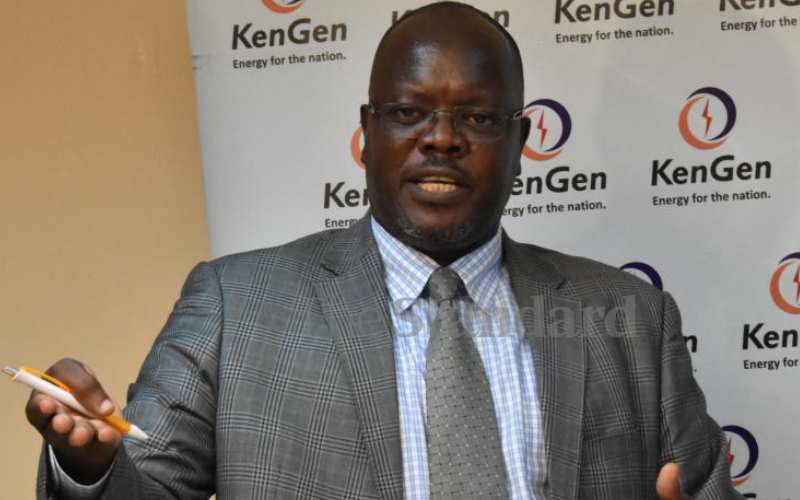
Ken- Gen Chief Energy Planner Willis Ochieng' during an interview with The Standard on June 17, 2021. [Samson Wire, Standard]
By GrahamKajilwa |
Kenya Electricity Generating Company (KenGen) is on course to modify their hydropower projects to make them resilient to changes in climate.
The modifications include increasing the number of turbines or the storage capacity of the dams.
The company, which is responsible for up to 75 per cent of electricity consumed in the country, says some of the adjustments to hydropower projects are meant to make the dams adapt to the changes.
The adjustments, said the company’s Chief Energy Planner Willis Ochieng’, have been informed by the unpredictable rain patterns, which the listed energy firm depends on for hydropower production.
Mr Ochieng’ explained that Kenya experiences bimodal weather patterns due to its position in the equator, which has the country recording two rainfall and two dry seasons. These are long rains from March to May and short ones from October to December.
In between the country experiences two dry seasons: hot dry in January and February, and wet dry season in June to September.
“These seasons dictate how we run our hydropower plants. They rely on water; we rely on the rainfall period to be able to fill our dams so that during the dry period we utilise the water harvested throughout the wet period to take us through the dry period until the rains resume,” he said.
However, while this has been the pattern, due to climatic change, this is not always the pattern.
Rains do come at times with high intensity for a short time. This then generates a lot of water within a short period , which does not give the soil time to take in more water and the catchment area becomes saturated, hence the dams get full and spill. “When dams are put in place, they have two functions; there is a third one; adaptation to climate change but the primary function is hydropower generation and flooding,” he said.
KenGen is therefore modifying Masinga Dam to increase its storage but will not add hydropower machines. “Once we increase storage which we are targeting to modify the spillway by 1.5m, this will lead us to increase (storage) by around 180 million cubic metres. It will then increase energy output,” said Ochieng’.
He added that the company had to adapt to climate change.
“The rainfall patterns are becoming erratic. You may get rainfall for only a week or even two weeks, and they are gone; not like before when we could tell that the rains start from this time and end at this period,” he said.
“So for you to ensure you have adequate water is to have storage. The larger the storage you have, the better, which is why dams are used now for climate change adaptation,” he added.
Ochieng’ said the modifications would be determined by the original design of the dams and the levels of water in the facilities, whose data is collected every 30 minutes and analysed daily for any opportunity for adjustments.
“Capacity of dams can be increased. You can add some turbines to generate more and KenGen has done some, including Kindaruma, which used to have two and recently we added a third unit to increase the output,” said Ochieng.




No comments :
Post a Comment